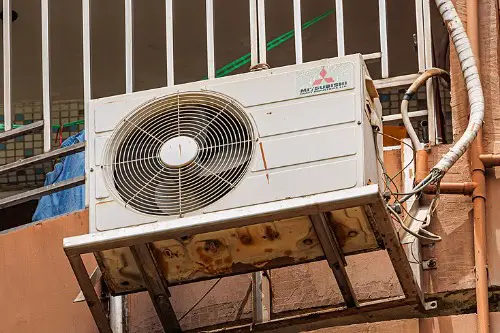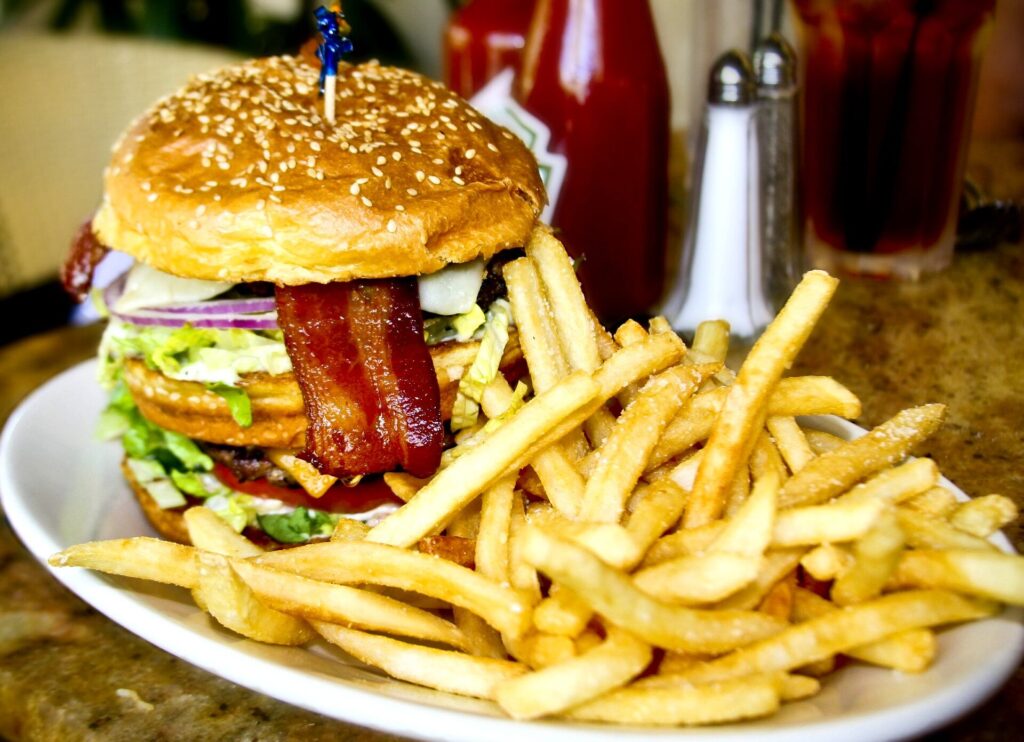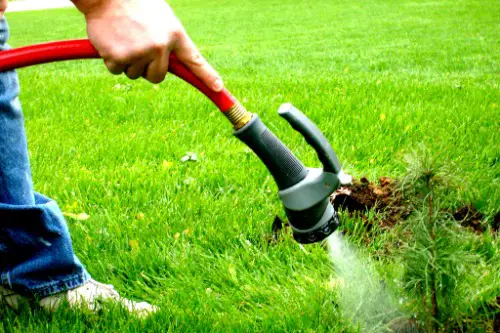1. Patriotism and Flag Displays

Americans take patriotism seriously, and displaying the flag is a common practice that can seem intense to outsiders. From giant flags outside businesses to clothing, bumper stickers, and even home decor, the U.S. flag is everywhere. While many Americans see this as a normal expression of national pride, people from other countries often find it excessive, according to The New York Times. In some places, constant flag-waving is associated with nationalism in a way that makes people uncomfortable.
Even within the U.S., debates over flag etiquette can be heated. Some believe the flag should never be altered, while others use it in protests to make political statements. Controversies over kneeling during the national anthem or burning the flag have sparked nationwide debates about free speech. Love it or hate it, America’s approach to flag culture is unique.
2. Tipping Culture

Tipping is so ingrained in American society that it feels almost mandatory, but many people outside the U.S. see it as confusing or unfair. In countries where service workers receive a livable wage, tipping is either rare or considered unnecessary. The American system often puts the burden on customers to supplement workers’ incomes, leading to debates about fair pay, The Guardian reports. Some even argue that tipping enables businesses to underpay employees while making customers feel obligated to cover the difference.
Even within the U.S., tipping customs vary widely and can be controversial. Some restaurants have experimented with no-tip policies, but they often struggle to succeed because of ingrained expectations. There’s also ongoing debate over how much to tip and whether it should depend on service quality or just be a fixed percentage. In some places, tipping too little can be seen as rude, while tipping too much might be seen as showing off.
3. Drinking Age Restrictions

The U.S. has one of the highest legal drinking ages in the world at 21, which seems extreme compared to many other countries. In Europe, for example, the legal drinking age is often 18—or even younger in some cases. Critics argue that if 18-year-olds can vote, join the military, and take on student debt, they should also be trusted to drink responsibly. The strict drinking age in the U.S. has led to a culture of secret binge drinking, especially on college campuses, CBS News reports.
At the same time, some Americans strongly support the 21-year limit, citing studies that link lower drinking ages to higher rates of drunk driving accidents. The debate also ties into differing attitudes about alcohol in general, with some viewing it as a rite of passage and others seeing it as a dangerous substance. Some states have loopholes allowing underage drinking in private settings or for religious purposes, adding to the inconsistency. No matter which side you’re on, the U.S. drinking age remains a hot topic.
4. Excessive Air Conditioning

Americans love their air conditioning, but outsiders often find the indoor chill shocking—literally. Walk into any office building, restaurant, or shopping mall in the summer, and you might feel like you’ve entered a freezer. While AC is a necessity in some climates, critics argue that Americans overuse it, leading to unnecessary energy consumption, according to TIME Magazine. Visitors from warmer countries often find it bizarre that Americans bundle up indoors in the middle of summer.
Some people even argue that extreme indoor cooling weakens the body’s ability to handle natural temperatures. Others point out that AC contributes to environmental issues by increasing carbon emissions. On the flip side, supporters say it’s essential for productivity and comfort, especially in regions with brutal heat. The debate over how cold is too cold is one that plays out in offices and homes across the country.
5. Enthusiasm for Work

Americans have a reputation for being obsessed with work, and it’s a cultural norm that confuses many outsiders, according to The Guardian. Unlike in Europe, where vacations are longer and work-life balance is a priority, Americans often brag about working long hours. Taking only a week or two off per year is standard, and many people feel guilty for using all their vacation days. The “hustle culture” mentality is seen as admirable by some but deeply unhealthy by others.
Studies suggest that this obsession with work leads to high stress levels and burnout. Meanwhile, some European countries have adopted four-day workweeks and generous parental leave policies with no loss in productivity. Americans, however, tend to see taking less time off as a sign of dedication and drive. The question remains: Is America’s work ethic an advantage, or is it just making people miserable?
6. Large Portion Sizes

Portion sizes in America are famously massive, which can be shocking to visitors from other countries. From oversized fast food meals to enormous restaurant servings, eating out in the U.S. often means taking home leftovers. While some see it as getting more bang for their buck, others argue it encourages overeating and food waste. Many countries emphasize smaller, more balanced meals, making American portions seem excessive.
Even soda sizes in the U.S. can be staggering compared to other places. Some cities, like New York, have tried to limit the size of sugary drinks, sparking debates over personal choice versus public health. Fast food chains have also been criticized for marketing enormous meals that contribute to obesity rates. Whether you see it as a perk or a problem, American portion sizes remain a hot topic.
7. Wearing Shoes Indoors

Many Americans have no problem wearing shoes inside their homes, but in other cultures, this is considered unclean or disrespectful. In many Asian and European countries, it’s standard practice to remove shoes before entering a home. Americans, however, often walk straight inside with their shoes on, tracking in dirt and germs from outside. Some hosts may even feel awkward asking guests to take off their shoes.
The debate over shoes indoors has even reached scientific discussions. Studies have shown that shoes can carry bacteria, pesticides, and other contaminants, raising concerns about hygiene. Despite this, many Americans see removing shoes as unnecessary or even uncomfortable. While some households enforce a no-shoes rule, it’s far from universal.
8. Smiling at Strangers

Americans tend to smile at people they pass, even if they don’t know them, but in some cultures, this seems odd or even suspicious. In places like Russia or Germany, smiling too much at strangers can be perceived as insincere or overly familiar. Some people assume that if someone is smiling at them, they must have an ulterior motive. In contrast, Americans often see smiling as a simple way to be friendly and polite.
This cultural difference can lead to misunderstandings, especially when Americans travel abroad. A well-meaning grin might be met with confusion or even suspicion. Some researchers believe this stems from America’s diverse immigrant history, where smiling helped break language barriers. Whether charming or confusing, America’s habit of smiling at strangers stands out.
9. Obsession with Ice in Drinks

If you order a drink in America, chances are it will come loaded with ice—sometimes more ice than liquid. While this seems completely normal to Americans, many people from other countries find it unnecessary or even annoying. In Europe and Asia, drinks are often served with little to no ice, as people prefer them at a milder temperature. Some argue that too much ice waters down the drink, making it less flavorful.
The American love of ice goes back to the early 20th century when refrigeration became widely available. It quickly became a sign of freshness and abundance, and now it’s just an expected part of dining out. Some travelers even request “no ice” when visiting the U.S. to avoid getting a half-full glass. Whether refreshing or excessive, America’s obsession with ice is a uniquely chilled tradition.
10. Drive-Thru Everything

Americans love convenience, and nothing proves that more than the sheer number of drive-thru services. Fast food is an obvious one, but in some places, you can also find drive-thru pharmacies, coffee shops, liquor stores, and even funeral homes. While many people appreciate the efficiency, critics argue that drive-thrus encourage laziness and contribute to car culture. Some cities have even tried to ban new drive-thrus to reduce traffic congestion and pollution.
Outside the U.S., drive-thrus are far less common, and some people see them as unnecessary. In walkable cities, people prefer to go inside and interact rather than shouting into a speaker. Health experts also point out that drive-thrus make fast food even more tempting, which isn’t great for a country already struggling with obesity. Love them or hate them, drive-thrus are a defining feature of American life.
11. Huge Suburban Lawns

In many parts of the U.S., having a big, neatly trimmed lawn is a status symbol, but to outsiders, it can seem wasteful. Large, grassy yards require tons of water, fertilizer, and maintenance, which has led to criticism, especially in drought-prone states. Some places, like Nevada, have even banned certain types of grass to conserve water. The American obsession with lawns is tied to the idea of homeownership and the “perfect” suburban dream.
In contrast, many other countries prioritize gardens, functional outdoor spaces, or natural landscaping over traditional grass lawns. Some environmentalists argue that the time and money spent on lawns would be better used on native plants that require less upkeep. Even within the U.S., there’s a growing movement toward alternatives like clover lawns or xeriscaping. Despite the pushback, a bright green lawn remains a key part of American curb appeal.
12. Solo Cups and College Party Culture

If you’ve ever seen an American movie with a college party scene, you’ve probably spotted the iconic red Solo cup. These disposable cups are a staple at house parties, but outside the U.S., they aren’t as common. Some foreigners even associate them specifically with American drinking culture and youthful recklessness. While they may seem like a harmless convenience, they also contribute to America’s larger issue of excessive plastic waste.
The drinking culture tied to Solo cups is also a point of controversy. Many argue that the college party scene normalizes binge drinking, leading to health and safety risks. Some schools have cracked down on party culture, but the image of a Solo cup-filled party remains deeply embedded in American pop culture. For better or worse, these little red cups are a symbol of a uniquely American way of celebrating.
13. Over-the-Top Holiday Decorations

Americans don’t hold back when it comes to decorating for the holidays, whether it’s Christmas, Halloween, or even the Fourth of July. From massive light displays to inflatable lawn decorations, holiday decor in the U.S. can be extreme. Some people love the festive spirit, while others think it’s excessive and wasteful, especially when it comes to electricity use. In some neighborhoods, holiday decorating even turns into a competition, with people trying to outshine their neighbors.
Other countries tend to celebrate in a more subdued way, focusing more on traditions and less on flashy displays. Some even find American-style decorations tacky or unnecessary, especially outside of December. On top of that, many people question whether all the plastic and energy consumption is worth it. Still, for many Americans, going all out for the holidays is just part of the fun.


